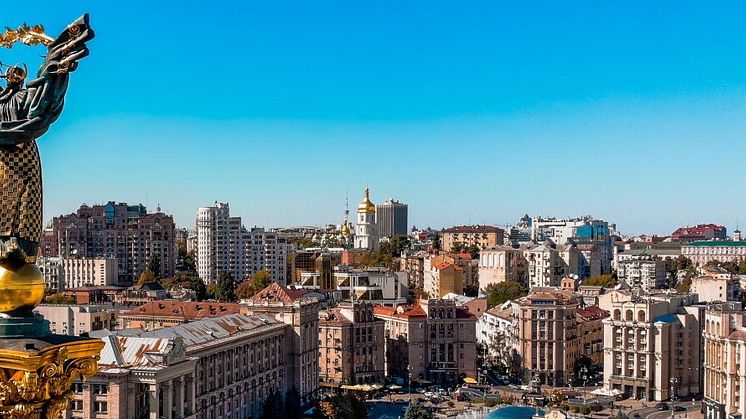
News -
Norwegian seafood exports to Ukraine, Russia and the Eurasian Economic Union
In connection with Russia's invasion of Ukraine, the Norwegian Seafood Council has received a number of inquiries about the consequences for Norwegian seafood exports to these countries. Here is a summary of key facts and figures.
Share of Norwegian seafood exports
- Ukraine accounts for 1.8% of the total export value of Norwegian seafood. Norway exported seafood worth NOK 2.2 billion to Ukraine in 2021. Salmon, trout, herring and mackerel are the main exports to Ukraine.
- Russia accounts for 0.2% of the total export value of Norwegian seafood. Norway exported seafood worth NOK 248 million to Russia in 2021. Exports to Russia consist mainly of live salmonids (smolt for farming), feed and ingredients for feed.
- The Eurasian Economic Union (EU), including Russia, accounts for a total of 1.7% of the total export value of Norwegian seafood. Norway exported seafood worth NOK 2 billion in 2021. The Eurasian Economic Union consists of Russia, Belarus, Kazakhstan, Kyrgyzstan and Armenia. Salmon, trout, herring and mackerel are the main exports to the Eurasian Economic Union.
- Belarus accounts for 0.9% of the total export value of Norwegian seafood. Norway exported seafood worth NOK 1.14 billion to Belarus in 2021. Trout, herring and salmon make up the main exports to Belarus.
- Air freight of seafood to Asia accounts for 12 per cent of Norwegian seafood exports. Norway exported seafood by air to Asia worth NOK 14.5 billion in 2021. Air transport is used mainly for fresh salmon and trout and live king crab.
Commentary from Norwegian Seafood Council
1. March 2022
The situation in Ukraine continues to escalate. The Ukrainians are fighting for their country at the same time as the flow of refugees out of the country is growing rapidly.
So far, food in general, or fish and seafood in particular, are not directly affected by the EUs sanctions list.
“For seafood, there is a full stop of exports into Ukraine. Norwegian fish exporters report that they are trying to find other markets for the fish that were bound for Ukraine. This is also the situation for other nations such as Chile and the Faroe Islands, and it is expected that the competitive situation will intensify in other markets”, says Tom Jørgen Gangsø, Director of Market Insight and Market Access at the Norwegian Seafood Council.
“At the same time, the airspace is closed. This also affects air freight of seafood from Norway to Asia. For the time being, Asian exporters and importers actors will be able to fly as normal, while the western exporters will have to send the fish around Russia. This means a longer journey and higher air freight costs. Lower freight capacity than normal will also mean less flexibility”, says Gangsø.
- A large proportion of exports to Ukraine and Belarus go via the Baltics and partly Poland. From there, it is transported further by car and partly by rail into the market. Deliveries to Ukraine have come to a complete halt, and it appears that deliveries from the Baltics and Poland to Belarus and other EU countries will be halted under the prevailing conditions.
- The same applies to the transport of pelagic species by rail and ship traffic into the Black Sea.
- On February 24, Russian authorities ordered all Russian trucks back to Russia. Some of these trucks are usually used to transport fish to both Ukraine and other EU countries.
- On Wednesday, February 23, the Ukrainian central bank stopped all payments abroad.
- Finnair stopped all flights over Russia from 27 February to 6 March. The EU and several other countries have closed the airspace to Russian aircraft and Russia has responded by closing the airspace to 36 countries, including Norway.
- In Norway, some whitefish and shrimp are landed from Russian vessels. This largely goes to freezer terminals. Much of this goes to re-export, but some is also purchased for the Norwegian processing industry. Some frozen cod is bound for example to the clip fish industry and some shrimp for processing in Norway. Volume and value have fallen sharply in recent years, and in 2021 amounted to NOK 375 million by the end of November.
24th February 2022
“The situation in Ukraine is both very serious and unclear. When it comes to the consequences for Norwegian seafood exports to the country, it is too early to say for sure. We are monitoring the situation and will keep Norwegian seafood exporters up to date as best we can”, says Tom Jørgen Gangsø, Director of Market Insight and Market Access at the Norwegian Seafood Council.
It is expected that exports to Ukraine will be challenging and that international sanctions and countersanctions will affect international trade, also for Norwegian seafood exports to the Eurasian Economic Union.
Export statistics
Export figures for Norwegian seafood to Russia, the Eurasian Economic Union and Ukraine for 2021.
The Eurasian Economic Union consists of Russia, Belarus, Kazakhstan, Kyrgyzstan and Armenia. Salmon, trout, herring and mackerel are the main exports to the Eurasian Economic Union.
Percentage measured by value of Norwegian seafood exports in total for 2021:
| Land/Region | Share of Norwegian seafood exports | Value of seafood exports (NOK) |
| Russia | 0,2 % | 248 130 000 |
| Belarus | 0,9 % | 1 140 420 000 |
| EEU (incl. Russia) | 1,7 % | 2 034 266 000 |
| Ukraina | 1,8 % | 2 199 522 000 |
Link to Eurasian Economic Union (EØU)
https://seafood.no/markedsadgang/myndighetskrav-per-land/russland/Den-eurasiske-okonomiske-union/



